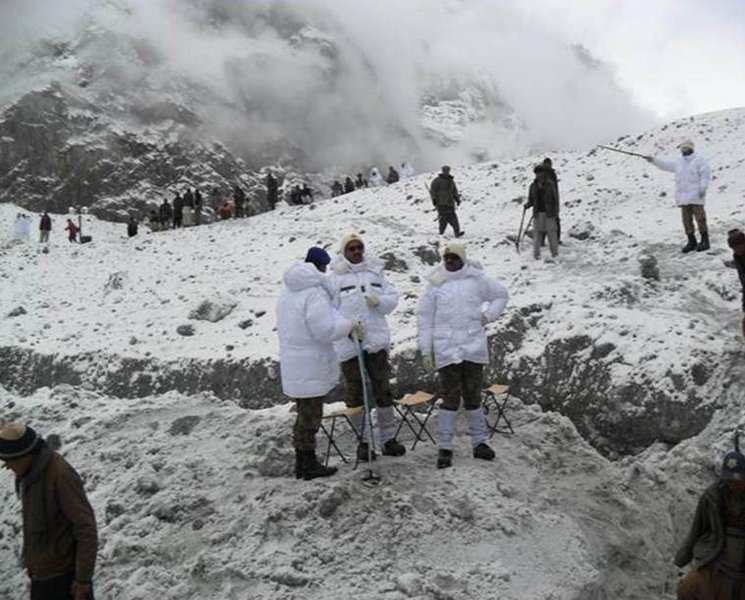
Hanamanthappa Koppad spent six days trapped after a massive block of ice fell onto his army post on the Siachen glacier, killing nine of his colleagues.
His rescue late Monday came days after India said there was little hope of survivors from the disaster in the disputed Himalayan region of Kashmir.
Siachen avalanche: Pakistan Army offers to help rescue missing Indian soldiers
General D. S. Hooda, who heads the Indian Army's northern command, called it a "miracle" as he described the huge challenges faced by the rescue team, operating at an altitude of 5,900 metres (19,600 feet).
"It was not a typical soft snow avalanche. It was like a wall of rock-hard ice," he told AFP, describing how army rescuers used sniffer dogs and specialist radar to detect the buried soldiers before cutting them free.
"The effort went on day and night, except during two nights when blizzards hit the area.
"In the end, the whole effort paid off as a miracle when a survivor was pulled out. He is now being treated at a military hospital in Delhi."
Hooda said the soldier, from the southern state of Karnataka, was found buried under nearly 25 feet (eight metres) of snow in temperatures of minus 45 degrees Celsius (minus 49 Fahrenheit). Reports said he survived in an air pocket.
Special battery-operated snow-cutters had to be flown in using helicopters, which at that altitude can only carry up to 50 kilogrammes (110 pounds) in weight.
"We are all very, very happy," Koppad's father told reporters in comments broadcast on television.
"God has been very kind to us. His mother had been crying, I was also crying," he said, without giving his name.
"We don't have money to go and visit him. If the government can help us a little, we can go to meet him."
Hooda said the bodies of the other nine soldiers had now been retrieved, declaring the rescue mission over.
An estimated 8,000 soldiers have died on the glacier since 1984, almost all of them from avalanches, landslides, frostbite, altitude sickness or heart failure rather than combat.
In 2012, 140 Pakistani soldiers were killed at the high-altitude Gayari base in one of the worst disasters on the glacier.
Each side is estimated to deploy around 3,000 troops on the glacier, where winter temperatures plummet to minus 70 degrees Celsius, with blizzards gusting at speeds of 160 kilometres (100 miles) per hour.
The nuclear-armed neighbours fought a fierce battle over Siachen in 1987, though guns on the glacier have largely fallen silent since a peace process began in 2004.
10 Indian soldiers missing after Siachen avalanche
The Kashmir region -- of which Siachen is a part -- is divided between Pakistan and India but is claimed by both in full.
It has triggered two of the three wars between the neighbours since independence in 1947 from Britain.
Prime Minister Narendra Modi visited the soldier in hospital shortly after his arrival in Delhi.
"We are all hoping and praying for the best," Modi tweeted.

1732849469-0/women-in-male-field-(1)1732849469-0-165x106.webp)















COMMENTS (2)
Comments are moderated and generally will be posted if they are on-topic and not abusive.
For more information, please see our Comments FAQ